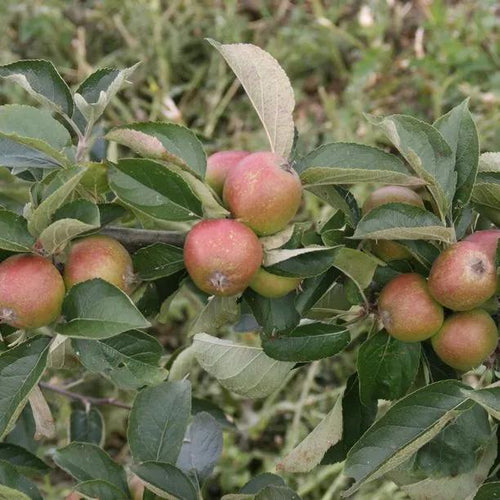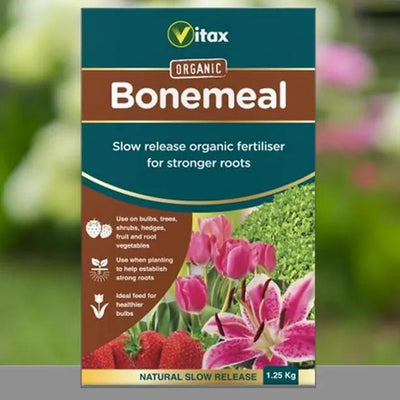Ashmeads Kernel Apple Trees
Ashmeads Kernel apples are quite small, yellow-green, russeted mid-to-late season eaters that juice well, and are also good for both cider and cooking.
They store well into the new year, getting sweeter over time.
Features
-
Flavour: "Having a crisp nutty snap, exploding with champagne-sherbet juice infused with a lingering scent of orange blossom"; it reminds us of eating pear drops with a little lemon drop at the same time.
-
Texture: Firm and juicy.
In a horticultural show, next to any modern apple, these patchy, dull looking, lumpy fruit wouldn't draw a second glance.
However, the fact that it's still popular after 300 years tells you that this is a delicious apple and, although it's not the most consistent cropper, the tree is tough and generally disease free.
Like many heritage apples, this tree isn't a regular cropper: on a good year it can make a bumper crop and on a bad year with a cold spring the harvest can be disappointing.
It's also normal for it to begin cropping well a few years later than other trees, but the wait's worth it in our opinion.
The blossom is lovely, and the tree is relatively low maintenance.
Browse our other apple varieties, or all our fruit trees.
Read our guide to buying apples.
Features
- Use: Eating: firm and juicy, with a sharp, aromatic flavour.
- Also great for cooking, juicing and cider.
- Russeted, lumpy - not pretty looking!
- Spur Bearer: suitable for cordons & training on wires.
- Tree's growth habit: Average vigour. Upright form.
- Tendency to biennial cropping
-
Harvest: October
-
Store & ripen in a cool, dry place: Until February.
Rootstocks:
All of our Ashmeads Kernel trees are grown on MM106 rootstocks, except for the cordons, which are grown on M9 rootstocks.
Pollination Partners for Ashmeads Kernel:
Your trees are self sterile triploids: its flowers must be pollinated to make any fruit and it cannot pollinate other trees.
Ashmeads Kernel is in pollination Group D.
This means that they'll be pollinated by other apple trees in pollination Groups C, D and E.
See our Guide to Apple Tree Pollination for a full list of partners & more tips about pollination.
Ashmeads Kernel Disease notes:
Disease resistance: Scab.
Disease susceptibility: Bitter Pit.








 Secure, One-Tap Checkout
Secure, One-Tap Checkout
 Hand Picked, Delivered to Your Door!
Hand Picked, Delivered to Your Door! 1 Year Bareroot Guarantee
1 Year Bareroot Guarantee










